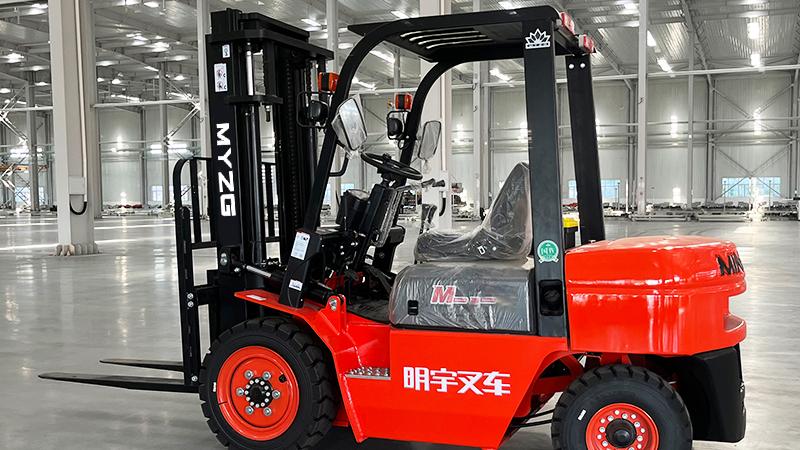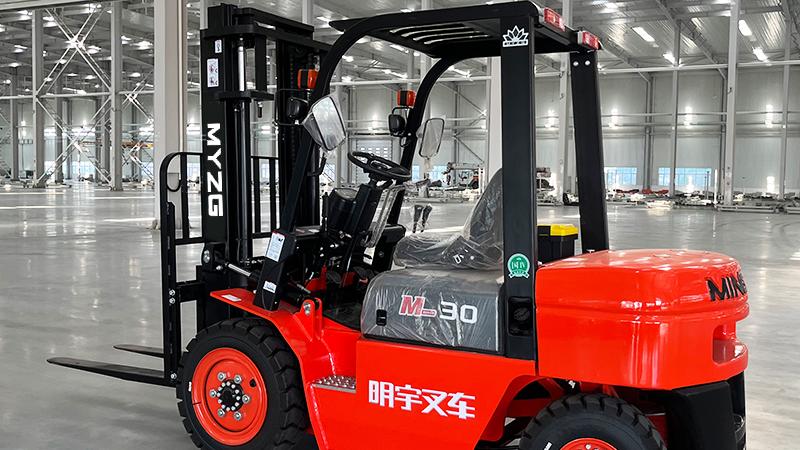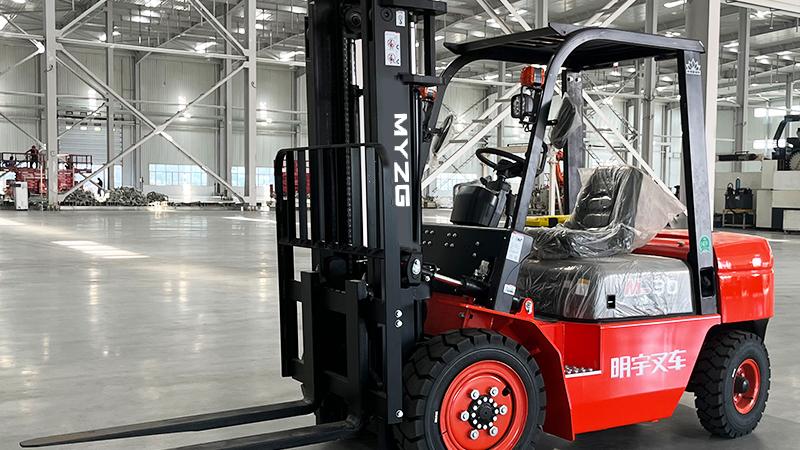The question of the maximum lift capacity for a standard diesel forklift is a fundamental one in the realms of material handling, logistics, and construction. However, the answer is not a single, simple figure, as the term "standard" encompasses a wide range of machines designed for diverse applications. Diesel forklifts are renowned for their robustness, power, and ability to operate outdoors and in demanding environments, making them a cornerstone of industrial operations worldwide. When discussing lift capacity, we must first understand that it is not an arbitrary number but a carefully engineered specification determined under specific, standardized conditions. The most common benchmark is the load capacity rating at a 24-inch load center, which is the horizontal distance from the forklift's mast to the center of gravity of the load. For what many in the industry would consider a "standard" or typical diesel counterbalance forklift, you will often find capacities ranging from 3,000 to 8,000 kilograms, with models around 5,000 kg being extremely prevalent in general warehouse and yard operations. It is crucial to recognize that this is the baseline, and the world of diesel forklifts extends far beyond this, with heavy-duty models capable of lifting 15,000, 25,000, or even over 50,000 kilograms for specialized applications like shipping container handling. Therefore, the initial answer is that a standard diesel forklift's maximum lift capacity is highly variable, but typically falls within a 3 to 8-tonne range, serving as the workhorse for a multitude of tasks.
Understanding the lift capacity requires a deep dive into the engineering principles and critical factors that influence this key specification. The stated maximum capacity is not a universal constant for the machine; it is a dynamic value that changes based on several operational variables. The most significant of these is the load center. As a load becomes longer or its center of gravity shifts forward beyond the standard 24 inches, the effective lifting capacity of the forklift decreases due to the principles of leverage and moment. A load chart, which is a legal and safety requirement displayed on the forklift, illustrates this relationship, showing reduced capacity at greater load centers and higher lift heights. The lift height itself is another critical factor; as the forks are raised, the forklift's stability is compromised, and its capacity to handle the maximum rated load diminishes. Furthermore, the presence of attachments, such as carton clamps, rotators, or boom attachments, significantly alters the forklift's capacity. These attachments add weight and change the load center, necessitating a de-rating of the forklift's nominal capacity. The condition of the forklift, including tire pressure (cushion or pneumatic), mast type (standard, full free, or triple), and the forklift's overall configuration (e.g., a three-wheel model versus a four-wheel model) also play a role. A diesel forklift's inherent stability comes from its counterweight at the rear, and any factor that shifts the combined center of gravity of the truck and the load towards the front axis of the forklift can lead to a dangerous tip-over incident. Thus, the maximum lift capacity is a carefully balanced equation of physics, engineering, and safety protocols.
Selecting a diesel forklift with the appropriate maximum lift capacity is a strategic decision that directly impacts operational efficiency, safety, and cost-effectiveness. Choosing a forklift with insufficient capacity for the application is an obvious safety hazard, leading to potential tip-overs, load drops, and catastrophic accidents. Conversely, opting for a forklift with a much higher capacity than typically needed is an inefficient use of capital; it results in higher initial purchase costs, increased fuel consumption, and potentially greater maintenance expenses. The key is to conduct a thorough analysis of the application. This involves not only identifying the single heaviest load but also understanding the average load weight, the typical load dimensions (to calculate the actual load center), the required lift height, and the working environment. For instance, a lumber yard handling dense packs of timber will require a different diesel forklift compared to a fabrication shop moving large, irregularly shaped metal components. It is also essential to consider future needs; if business growth is anticipated, investing in a slightly higher capacity model might be prudent. Consulting the forklift's load capacity plate and referring to the detailed load charts provided by the manufacturer is non-negotiable. Ultimately, working with a reputable dealer or a qualified material handling consultant can ensure that the selected diesel forklift not only meets the stated maximum lift capacity requirement on paper but is also the optimal machine for the specific nuances of the operation, ensuring a safe and productive workflow.
In conclusion, while the maximum lift capacity of a standard diesel forklift is often perceived as a simple number, it is, in reality, a complex and conditional specification. The typical range of 3,000 to 8,000 kg serves as a useful guideline for common applications, but it is merely the starting point for a more comprehensive understanding. The true capacity in any given moment is a function of the load's characteristics, the forklift's configuration, and the operational environment. Adherence to the manufacturer's specifications, embodied in the load chart, is the cornerstone of safe operation. The diesel forklift remains an indispensable asset in heavy-industry sectors due to its power and durability, but its power must be harnessed with knowledge and respect for its limitations. By moving beyond the basic question of "what is the maximum" and delving into the "how," "why," and "when" of that capacity, businesses can make informed decisions, optimize their material handling processes, and, most importantly, foster a culture of safety that protects both their personnel and their assets. The diesel forklift is a tool of immense capability, and understanding its lift capacity is the first step in leveraging that capability to its fullest and safest potential.
Post time:Sep.29.2025



